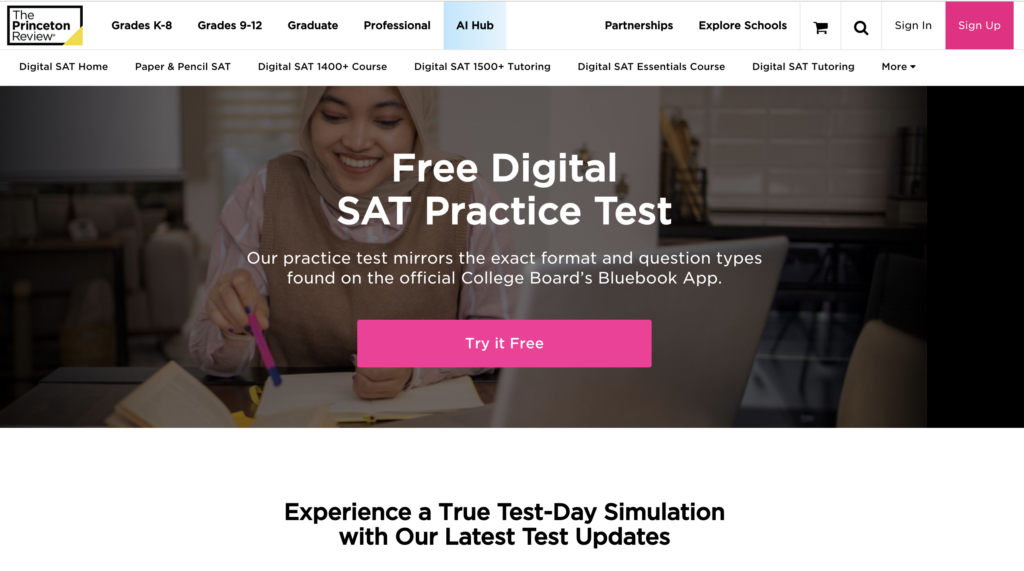The Digital SAT (DSAT) is rolling out across the United States in the spring of 2024. The test is shorter, adaptive—and digital. Now is the time to ensure your school community is fully aware of the changes the College Board is making.
In 2020, many colleges and institutions adopted test-optional policies in light of the Covid-19 pandemic. Now, in 2024, institutions like Dartmouth are reintroducing standardized test requirements for student admissions. Others, such as Harvard, are committed to remaining test-optional until the 2026 admissions cycle. The implication is clear—not only is the SAT not going away, but it’s poised to make a comeback. Students are still taking it, whether it’s to strengthen their applications or apply for the many scholarships and grants requiring test scores. Among Texas students, 71 percent of 2023 high school graduates took the SAT.
Let’s delve into this digital transition to help you provide valuable insights from The Princeton Review® for Texas school leaders, teachers, and communities.
A Digital Shift
The DSAT launch marks a pivotal shift from the traditional paper-and-pencil format to digital-first administration. The custom-built Bluebook™ application, developed by the College Board, will serve as the digital interface for this new era of SAT testing. Note that while the test is digital, it’s not online—meaning internet disruptions will not create testing disruptions. The new format is part of a broader trend of digitization in education, and it brings with it some new, and ideally, welcome, exam features.
Four Key Changes to the Digital SAT
1. Streamlined Timeline
With a condensed timeline of 2 hours and 14 minutes, the new DSAT length is a notable reduction from the SAT’s former three-hour experience. The content structure has also been revamped, combining the reading and writing into a single section. The DSAT consists of one reading and writing section with two, 32-minute modules and one math section with two, 35-minute modules. These are separated by a ten-minute break.
2. Adaptive Design
Just like the Digital PSAT® (DPSAT) that many students may have already experienced, the DSAT employs a multistage adaptive design. Each section has two modules. The student’s performance in the first module influences the difficulty level of questions in the second module. This adaptive approach tailors the exam to individual strengths and weaknesses, providing a more personalized testing experience that homes in on each student’s score as the exam is in progress.
3. Question Format
The DSAT predominantly features multiple-choice questions. In the math section, however, some questions require students to enter their answers. There is no penalty for guessing on any question type, so students should be advised to leave no answer blank.
4. Accessibility-Forward Approach
The DSAT embraces an accessibility-forward approach. Students may take the test on their approved devices, including Windows or Mac computers, iPads, or school-managed Chromebooks. The digital exam is designed to ensure an uninterrupted testing experience, even in the event of potential internet connectivity issues.
Preparing for the DSAT

As students prepare for the DSAT, they should take advantage of free practice tests to familiarize themselves with the testing experience. Getting to know the exam’s unique features, such as the built-in Desmos® calculator and time-management tools, like visible timers and question flags, will also help them have a confident test-taking experience on administration day.
The DSAT represents a significant step towards a more accessible, adaptive, and streamlined SAT testing experience, one that your students can enter into well-prepared.
For more information, please contact Zachary Gonzalez, K–12 Director of Educational Partnerships, at Zachary.Gonzalez@review.com.
DSAT® and SAT® are both trademarks registered by the College Board. The Princeton Review is not affiliated with Princeton University.

